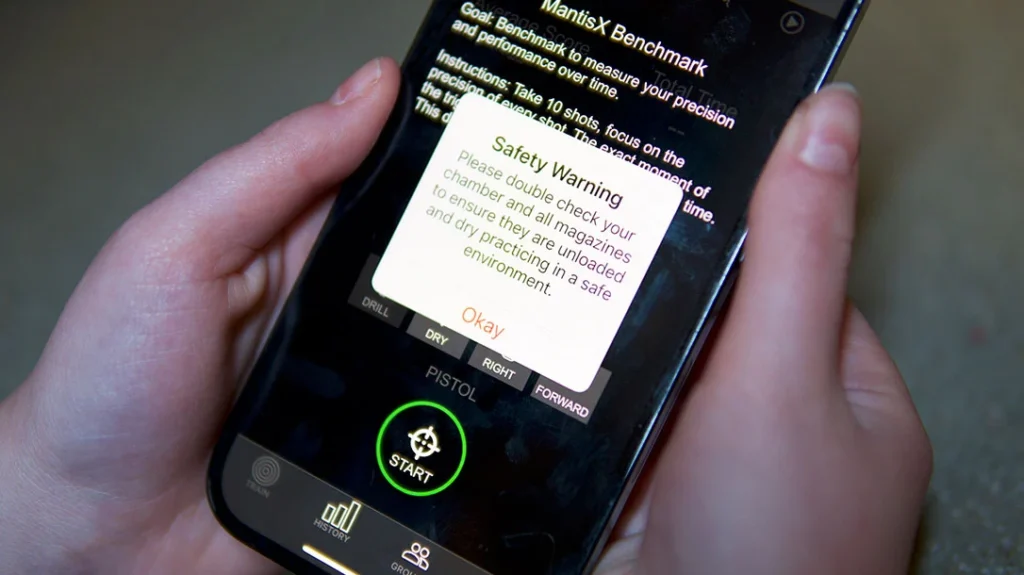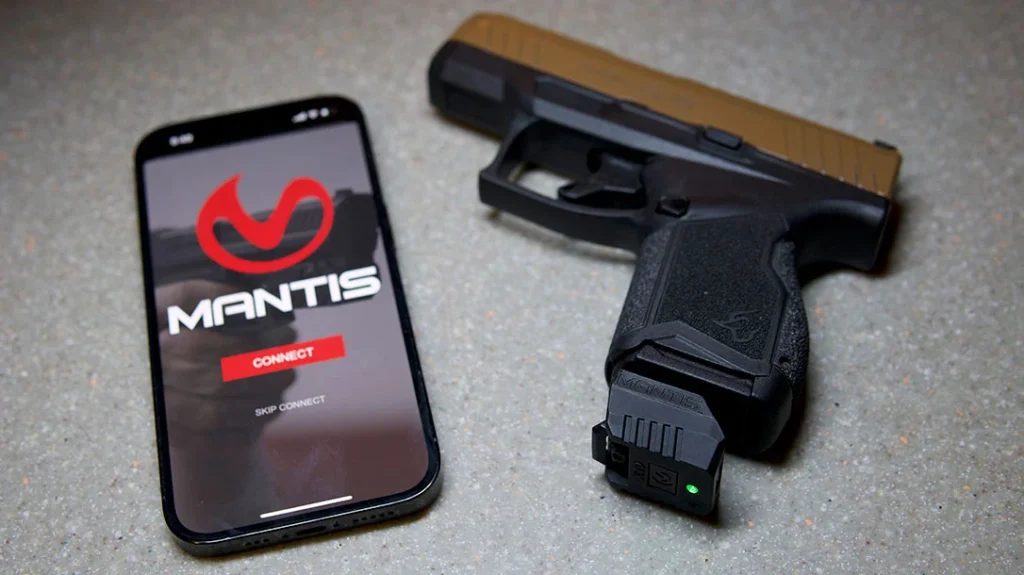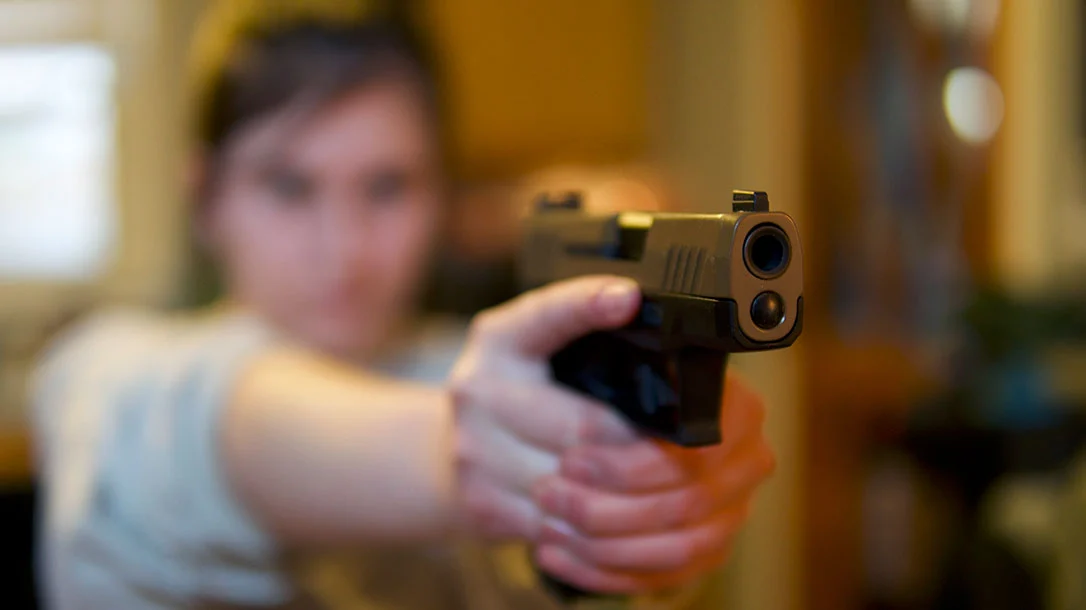Dry firing is the task of operating a firearm without the use of live ammunition. It is designed to improve and fine-tune a shooter’s trigger control, sight picture, grip, and many other shooting skills. Likewise, it is a safe and fun task for all skill levels. However, it is important to note that this practice method does have a few drawbacks worth considering. Let’s explore the pros and cons of dry fire practice.
Dry Fire Pros and Cons
1 – Cost
One of the most beneficial aspects of dry firing is that it is a cost-effective type of training. Since no live ammunition is necessary to accomplish this task, you can essentially dry fire at zero cost. All you need is yourself, your firearm, and a safe location.
However, if desired, you can invest in a dry firing laser system, which can cost anywhere from $100 and up. This may seem costly. But the amount you would be saving on ammunition, range time, and travel is well worth it in the long run.
Advertisement — Continue Reading Below
2 – Convenience
Many shooters find dry firing extremely beneficial because you can train in the comfort of your home. You do not have to pack your range bag or prepare yourself mentally and physically to head out the door.
Instead, you can just show up as you are and get straight to work. This is especially beneficial for those with a busy schedule who may not have the time to visit the gun range. Training at home is a stress-free, enjoyable, and comfortable way to strengthen your skills. After all, who doesn’t want to practice in their pajamas and slippers?
Advertisement — Continue Reading Below
3 – Confidence
One of the biggest challenges a new shooter faces when learning how to operate and shoot firearms is learning how to be confident around them. One simple way to build your trust and better familiarize yourself with firearms is dry firing. Dry fire allows shooters to develop muscle memory and learn fundamentals such as grip, sight picture, and trigger control.
Essentially, the more you handle your firearm, the better you will understand the ins and outs of your firearm. This not only creates a more comfortable shooting experience but also a confident and prepared shooter.

Advertisement — Continue Reading Below
4 – Training Abilities
When attending a gun range, it can be easy to assume that you can train however you would like. After all, you paid for the booth space, brought your own materials, and are practicing safely, right? Wrong. Gun ranges have rules, which means that there can sometimes be restrictions and limitations on how you can practice.
Unlike dry firing, which allows you to train how you please, a couple of examples of training restrictions you may find at the range are: not being allowed to draw from your holster, and being unable to move around and experience different shooting positions.
Nonetheless, please note that every range is different and will vary in its rules and expectations for shooters.
Advertisement — Continue Reading Below
5 – Bad Habits
If not careful, one major disadvantage to consider about dry fire practice is that it can reinforce bad habits. A few examples of poor habits include jerking the trigger, having a loose grip, and failing to follow through after your shot.
One of the best ways to prevent these mistakes from occurring is by reminding yourself to slow down. Many shooters like to rush through the process. However, it is vital to take your time and really think about what you are doing. Start slowly and work your speed up in gradual increments.
Furthermore, you should consult a professional to prevent these habits from forming in the first place.
Advertisement — Continue Reading Below

6 – The Types of Firearms
Another drawback of dry fire training is that you have to be careful what types of firearms you practice with. Many modern centerfire handguns, revolvers, and rifles are safe to dry fire. However, using rimfire firearms can cause damage to the gun.
Since rimfire firearms are created to have the firing pin strike the rim of the cartridge, dry fire practice will cause the firing pin to hit the breech face. This leads to breaking, denting, or deforming the firing pin.
Advertisement — Continue Reading Below
To protect your device, it is highly recommended to use dummy rounds, also called snap caps. They allow the firing pin to have a safe location to hit. Additionally, it is recommended to perform routine inspections on your tool for any wear and tear.
7 – Recoil Management
Many new shooters find that managing the kickback (recoil) of their firearm can be challenging. So, frequent practice, time, and patience are essential to strengthen your skills. Dry firing allows a shooter to practice different techniques to improve recoil management. However, it does not simulate the live feel of the backwards force of your firearm.
The only way to fully understand and conquer the sensation of recoil and its power is by training at the gun range.

Be Careful Not to Allow Bad Habits to Infect Your Dry Fire
Overall, dry fire training is a cost-effective and convenient way to better yourself as a shooter. It allows you to practice drills you cannot do at the range. Likewise, it also helps familiarize shooters with their tools and builds better confidence.
While dry firing does have many benefits, this practice method can reinforce bad habits, cause damage to rimfire firearms, and does not simulate the true feeling and sensation of recoil.



